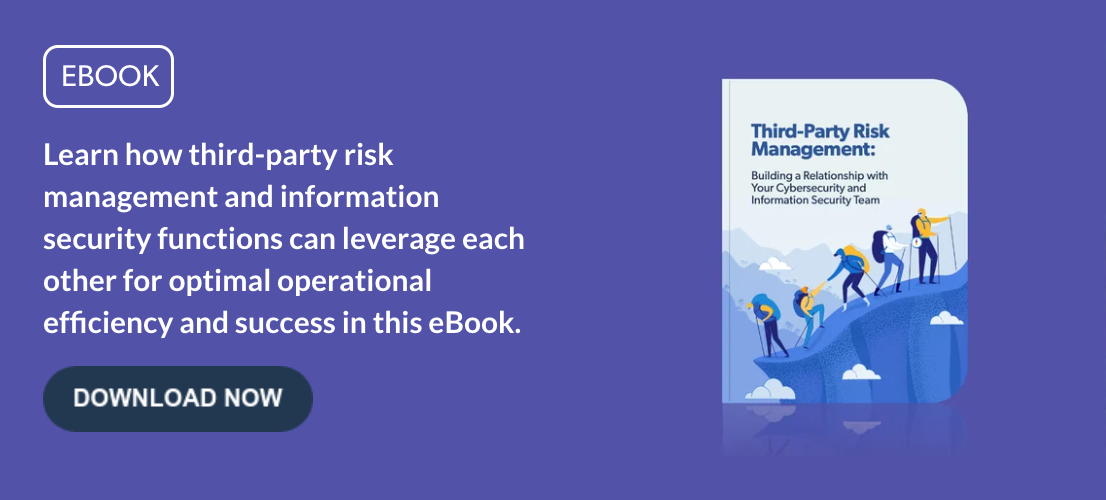Cybersecurity threats are a constant and evolving presence in many third-party relationships, so it’s essential to establish a strong partnership with your information security (InfoSec) team, who are the experts when it comes to mitigation for these risks. With the right strategy and processes in place, your InfoSec team can play a vital role in strengthening your third-party risk management (TPRM) function.
Utilizing InfoSec Within TPRM Workflows
Understanding how to protect your organization against third-party cybersecurity risks begins as part of the TPRM due diligence process. It’s in this stage where you’ll collaborate with InfoSec in the following areas:
- Identifying emerging risks: Your InfoSec team is essential to identify any new or emerging risk areas in your third party’s cybersecurity environment. This information is valuable when determining what due diligence documents need to be collected or additional questions to ask your vendor.
- Developing questionnaires: To get the most out of your due diligence questionnaires, they should be composed of relevant and reportable questions. Engage your InfoSec team to help build robust questionnaires that will ensure you collect the appropriate data needed to make informed decisions.
- Defining metrics: It’s important to establish standard metrics for critical vendor products and services throughout your organization. Collaborate with InfoSec to ensure that recovery time objectives (RTO) and recovery point objectives (RPO) are acceptable to the business lines that the vendor’s product or service will impact.
- Determining the effectiveness of controls: After the due diligence is collected and reviewed, you’ll need to implement mitigating controls and determine if the resulting residual risk is acceptable to your organization. TPRM should consult with InfoSec to assess if those mitigating controls are satisfactory.
3 Best Practices for a Successful Partnership
Collaboration between your InfoSec and TPRM teams can be highly beneficial to your organization’s business strategy, so it’s vital to understand the following best practices to ensure a successful partnership:
- Proper communication: Utilize your TPRM program as the central source of truth where your InfoSec team can find the most recent and relevant vendor data. Effective communication from both teams will help streamline many different processes and avoid multiple data requests.
- Education and training: Internal and external cybersecurity training can be a valuable tool to support your InfoSec team’s processes. By educating your vendors on your organization’s cybersecurity expectations, they’ll be better prepared to interact with your InfoSec team. Similarly, providing your organization’s employees with appropriate cybersecurity training will strengthen your overall risk environment.
- Consistent standards: Ensure that any metrics and details in critical vendor assessments are standardized throughout your organization. Your InfoSec team should provide input regarding acceptable recovery time objectives (RTOs) and recovery point objectives (RPOs).
Building a collaborative relationship between your InfoSec and TPRM teams may take some time and strategic planning. However, it’s a worthwhile effort to protect your organization from cybersecurity risks while optimizing overall business functions.





.gif?width=1920&name=Sample-Graphic-Animation%20(1).gif)



